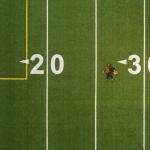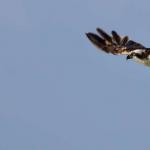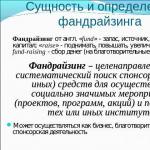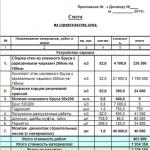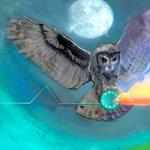Birds of Russia. Birds Bird names for children
Our planet is inhabited by so many birds, the names of which we sometimes have not even heard. They are found everywhere: in forests, mountains, steppes, on sea coasts and even in the cold tundra. The diversity of this group of fauna is so great that, for example, on the territory of the Russian Federation alone you can meet representatives of more than 400 species, including not only sedentary, but also migratory birds, photos with names of which can be easily found in atlases.
Order Passeriformes
Interestingly, more than 50% of all bird species belong to the passerine order, with the smallest being the kinglet (6 g), and the largest being the raven (1.5 kg). There are four subspecies of these birds: songbirds, semi-songbirds, screamers (tyrants) and broad-billed birds (broad-billed birds). The habits and colors of birds, including forest birds, are very diverse, and the males sing and look the most impressive. They are the first to arrive at the site chosen for nesting, and with their singing they mark the territory and attract females. Some species, such as starlings and jays, are able to copy the voices of different birds and some words of our speech. Distributed everywhere.
Some passerines live in whole flocks during the nesting period, but most form pairs. The male chooses the place, and different subspecies prefer for this purpose hollows, tree branches, stones, holes in the ground, rocks, etc. Reproduction occurs in spring or summer, although, for example, the crossbill is not afraid of the cold, and if there is enough food (spruce and pine cones ), then he nests even in January.
All passerines hatch chicks that are born barely covered with light down, deaf and blind, but grow very quickly. Both the female and the male feed the cubs. On the 10-15th day, accompanied by their parents, the babies fly out of the nest; in species nesting in hollows, this happens a little later - on day 20-25.
The names of birds that belong to passerines are always heard: sparrow, tit, oriole, swallow, starling, wagtail, bunting, etc. Among the larger ones, we can distinguish the crow, jay, cardinal,
gardens, meadows and fields

All birds of open spaces are adapted to their habitat in their own way. Some of them move excellently on the ground, not only in search of food, but also to escape from enemies, practically without using their wings. They have lost the ability to fly, but they have strong legs with short toes, which facilitates fast running and digging. This group of birds includes galliformes (grouse, pheasant, partridge, guinea fowl, crax), ostriches, etc.
Daytime and nocturnal “flying” predators are characterized by powerful wings and sharp claws, which helps them hunt well. This group includes falcons, black kites, hawks, owls, meadow and field harriers, etc.
Steppe birds
The Russian steppes stretch all the way from the shores of the Azov and Black Seas to the Urals itself, and it is quite natural that a great variety of birds live in such open spaces. Steppe and desert birds, the species and names of which we will give below, are forced to be careful. Open space is not very rich in shelters, so sometimes only a quick reaction and flight can save the bird from the enemy.
Since steppe and desert species move a lot among the grass in search of food, their legs are sufficiently developed for this. In addition to partridges, steppe birds include: demoiselle crane, common bustard, little bustard, lapwing, bustard, etc. They skillfully hide in the grass thanks to the “camouflage” coloring of their feathers and easily find food on fertile steppe soils. Plants and insects are the main food, but birds of prey, photos with names of which can be found in any manual, hunt snakes, frogs and rodents, of which there are a great many here, and also do not neglect carrion. Some species of birds make their nests directly in the ground, and large predators make their nests on trees that are rare in these places.
Desert birds
There are few birds in the desert because they cannot tolerate thirst. In Russia, the south of the Astrakhan region and the east of Kalmykia belong to desert zones that abound with vegetation and moisture only in the spring. Birds such as desert chickens, bustards, warblers, and steppe eagle feel comfortable in fairly difficult conditions. Pelicans, mute swans, ducks, and egrets can nest in border areas near water bodies.
It is impossible not to mention the world's largest flightless bird - the African ostrich, whose weight can reach more than 150 kg. Evolution took care of him, giving him a long neck for a good view of the area and powerful legs for fast running and hitting the enemy during a fight. Ostriches live in numerous families; They feed on vegetation, insects, lizards, rodents, but can pick up the remains of predators' meals. The funny story about ostriches hiding their heads in the sand is just a joke, but females hatching their chicks literally flatten themselves on the ground when they see danger, trying to become invisible. Due to the heat in summer, desert birds are active at night, and in winter - during the day, when it is warm.
Forest birds
Forest birds make nests in trees and bushes, as well as in hollows. Woody vegetation serves for them not only as a refuge, but also as a place for obtaining food. Therefore, the paws of most species are designed in such a way that they easily grasp branches. Common features are long tails and wide, shortened wings, allowing them to quickly take off, brake and perform tricky maneuvers between dense branches. Forest birds include most passerines, woodpeckers, owls and Galliformes.
Birds that climb vertically on trunks have claws that are curved and sharp. Some names of forest birds of this group characterize this method of movement (nuthatches). For support and balance, pikas and woodpeckers use their tails, and tits, finches and some other pichugas are able to hang from the branches from below when obtaining food. Forest predators hunt in flight, or by rapidly falling down onto their prey.

Birds of prey of the forest
Characteristic features of day and night predators of the forest are a sharp hooked beak and long claws on strong legs. In addition, they have excellent vision and hearing.
Some names of Russian birds related to forest predators: eagle owl, white owl, owl, honey buzzard, buzzard, goshawk, etc.
Origin of bird names
The names of the birds were not chosen at random: almost all of them suggest the presence of some features noticed by people. For example, names were given to the cuckoo (ku-ku), siskin (chi-chi), tit (sin-sin), rook (gra-gra), as well as hoopoe, seagull, lapwing and many other birds for their voice and style of singing.

The birds of the Urals also received names for their characteristic plumage: greenfinch, hazel grouse, redstart (jay), and such birds as the flycatcher, honey buzzard and nutcracker indicate their preferences in food. The wagtail and the wagtail are easy to distinguish by their behavior, but the nesting location of some birds is literally included in their name: the shore swallow digs holes on high banks, and the warbler hides in dense lake vegetation.
The names of birds are easy for children to remember if they resemble the sounds they make, for example, when walking, like a heron. She slowly walks through the swamp mud, as if “grabbing”, raising her long legs high, and the village dialect has modified the name of the bird from “chapel” to heron. Or if they are associated, for example, with snow, where the name of the bird bullfinch comes from.
But hunters know why the capercaillie got its name: when it displays, it is so carried away that it literally stalls and does not hear the dangerous noise at all. But when it falls silent, everything turns into attention.
Based on their habitat, names were given to birds such as the chaffinch and the robin. Small finches fly in and fly away during the chilliest, coldest months, which is why they were called that, although they themselves are quite frost-resistant. And the robin, which often settles in gardens closer to people, greets the morning and evening dawn with its ringing singing.
Bullfinch
The Russian origin of the name of the bird bullfinch is also peculiar, because it flies to our region for the winter, along with the snow, and with the onset of spring flies away to dark coniferous forests. The bullfinch is always associated with the New Year, so the image of the little red-bellied bullfinch is decorated with household items, New Year's cards and souvenirs.

The birds are part of the finch family and live in flocks, constantly calling to each other by whistling. In winter it is found even in city parks. Breeds with the onset of warm weather in the alpine and taiga forests of Eurasia, the Caucasus, and the Carpathians. It feeds on berries, seeds, and tree buds.
Waterfowl
Waterfowl, photos and names of which are given below, are those birds that are able to float on the water. These do not include species that only find food in water bodies. Due to their special lifestyle, they are characterized by common features: membranes between the fingers, dense plumage and a secretory coccygeal gland that lubricates the feathers.

The name of waterfowl, or rather orders, is derived from the most prominent representative: Anseriformes, pelicans, loons, gulls, penguinids, etc. The food is fish, shellfish, frogs, algae, which they get by diving into the water, like cormorants and ducks, or lowering only their heads, like swans and ducks. Seagulls can catch fish directly in flight, plunging only their beaks into the water.
Waterfowl of Russia
Waterfowl are widespread throughout the Russian Federation, photos and names of most of which are familiar to everyone. Although the majority are migratory: ducks, geese, swans, etc. At the end of summer, active migration of waterfowl to wintering areas begins. By the way, some representatives of this group spend most of the year far out to sea, returning to the shore only for nesting and hatching chicks (some ducks). The habitat can rightfully be considered Sakhalin, the Kuril Islands, Kamchatka, Crimea and other places with an abundance of water bodies.
Russian waterfowl, whose names are long-tailed duck and eider, live in Yakutia and on the shores of Lake Chukotka. The following breed along the Volga: moorhen, red-crested pochard, great grebes, greylag goose, mute swan, and coot.
Red birds
Among all the diversity of birds, red birds stand out especially, whose name is very exotic, as is their bright plumage. If our lentils, crossbills and bullfinches are partially painted in this color, then flamingos, tanagers, Virginia cardinals, fiery velvet weavers, and ibis are almost entirely red. Most of these birds live in tropical forests, in the south of America, Hawaii and other islands, Australia and Africa. They belong to passerines, weaverbirds, flamingos, storks and other species.
Different species of birds primarily differ in body size, beak shape, plumage color and habitat. It is difficult to describe all the features briefly, so we will only touch on a few. Interestingly, the beak of each bird is designed in such a way that it can easily obtain food for itself. As a result of morphological adaptation, birds were divided according to the shape of their beaks into 14 groups, including: omnivores, fishermen, insectivores, skimmers, mowers, feeding on coniferous seeds, nectar or fruits, scavengers, predators and others.

As a result of observations, it was noticed that some species of birds have remarkable intelligence and ingenuity. Thus, seagulls and crows, having found a shellfish or nut, lift it into the air and then throw it on the ground to break it, repeating this manipulation several times. And green night herons throw bait in the form of a twig or leaf onto the water to attract fish. Parrots, jays and rooks can be taught human speech, and the woodpecker finch uses a thin stick to pick a crack in the bark of a tree and extract insects from it.
The role of birds in nature and for humans
The importance of birds in nature cannot be downplayed: interacting with each other and animals, they build complex relationships that contribute to natural selection. Birds help disperse seeds, and some species cross-pollinate flowering plants.
Birds of prey maintain the balance of rodent growth. And thanks to the insectivorous birds, which eat caterpillars and larvae, many crops, including agricultural ones, are preserved, which is very useful for humans. That is why all possible measures are being taken to preserve various species of birds, and nature reserves are being created.
Birds have always fascinated people, because these graceful birds can do something that humanity could only dream of before... Flight! How wonderful it must be to rise into the air, feeling the gusts of a light breeze on your body. Or, having caught the air flow, surrender to its mercy and soar above the ground without making any effort.
It is not surprising that as soon as the camera turned from a luxury item available only to a few into the most common equipment that almost every family has, beautiful photographs of birds became the desired prey of any amateur photographer. Birds are photographed in flight and on the ground, in flocks and alone, with or without chicks.
There are simply countless options for photography, because each bird has its own character, habits and flight secrets. Take, for example, the peregrine falcon - the fastest of all living creatures on the planet. It is worth photographing it during a vertical dive, when it reaches speeds of up to 90 m/s, and you have a delightful photo of the bird. True, you need to have time to press the button.
Watching flightless birds can also yield many amazing photos. The numerous colonies of penguins alone are worth it! Yes, these birds will never rise into the air, but how graceful and fast they are under water!
In general, look at photos of birds, admire them and never tire of admiring them. After all, today there are slightly less than ten thousand species of birds living on earth. This is the largest and most diverse group of the superclass of tetrapods. About 657 species of birds nest in Russia alone, and in total more than 780 species of birds are found in the country. Interestingly, birds inhabit all possible ecosystems of the Earth from the North Pole to the South Pole.
Our planet is inhabited by millions of different birds. All of them are beautiful, unique and useful in their own way and live throughout the territory of our earth. Of course, it will not be possible to fit information about each winged species into one article. But we will try to find out about all the most common and interesting representatives of this group.
Most beautiful
Each bird is beautiful in its own way, but there are also those who, undoubtedly, are standards of grace , beauty and brightness.

The most dangerous
Strong wings, agility, powerful paws, long claws, impeccable hearing and vision - nature has blessed birds of prey with all this. List of bird names, which are the most dangerous and fight for their existence in all possible ways, and also hunt no worse than large predatory animals, looks like this:

 Everybody knows, that such birds exist that cannot fly into the air. Fortunately, this does not in the least prevent them from leading a comfortable lifestyle, and from us admiring these creatures. There are several reasons why some birds cannot fly like all other birds. The first reason lies in the bones being too small and the lack of a keel, and the second is that the mass of some birds is too large for flight.
Everybody knows, that such birds exist that cannot fly into the air. Fortunately, this does not in the least prevent them from leading a comfortable lifestyle, and from us admiring these creatures. There are several reasons why some birds cannot fly like all other birds. The first reason lies in the bones being too small and the lack of a keel, and the second is that the mass of some birds is too large for flight.
Everyone knows the bird ostrich cannot fly, but is an excellent runner due to its well-developed muscles and long legs. It should be noted that this is the largest flightless bird on earth. The structure of ostrich wings is quite primitive and also has a loose structure. At least the wingspan and can reach several meters, this is not enough to lift into the air a body whose mass varies from seventy to one hundred and fifty kilograms.
Emu outwardly similar to the ostriches described above, however, many are smaller. Their weight can reach only fifty-five kilograms, and the height of the bird is about two meters. Emus are quite good runners, capable of reaching speeds of up to fifty kilometers per hour. Why can't they fly? The fact is that the wings of this bird are very small and poorly developed. An interesting feature is the presence of small claws at the end of each wing. Despite the inability to hide from predators in the air, emus are excellent at protecting themselves from many dangers with the help of strong legs and sharp claws.
Cassowaries are also quite large and their weight can reach sixty kilograms. Their distinctive feature is their brightly colored head and neck, which give the bird a rather unusual and at the same time attractive appearance. The territories where they live are in New Guinea and on some Australian islands. They take second place in size, giving first place to ostriches.
Total cassowaries are non-aggressive and try to stay away from people and populated areas, however, if you approach them at too close a distance, the birds will begin to actively defend themselves, and their offender will be in trouble, because without making much effort, the cassowary can kill the attacker using its claw - dagger on the leg. Fortunately, collisions between humans and this large bird do not happen very often.
External component rhea birds makes them look like ostriches, however, there are also significant differences in their appearance. The head is more round in shape, and the feathers are much more beautiful than ostriches and in some individuals are painted white. Rheas can boast not only of their powerful legs, thanks to which they reach speeds of up to sixty kilometers per hour, but also of their ability to swim across fairly large bodies of water.
Kiwi truly a unique bird. She is very small, with a long beak, ruffled plumage and a funny manner of movement. This species cannot boast of acute eyesight, however, their hearing and sense of smell are excellent.
The smallest
The diversity of bird species is truly amazing. They can be as huge as ostriches, weighing one hundred and fifty kilograms, or very tiny, weighing several grams.

There are a huge number of birds in Russia; birds can be found in all natural areas of the country. These are aquatic and forest, field and urban, birds of the tundra and arctic. Quite a lot of birds are rare and endangered species, so they are listed in the Red Book. Unfortunately, there are bird catchers who sell birds at pet markets. Those people who care about the conservation of nature should not buy birds, because otherwise they will finance this criminal and destructive activity for the fauna.
City residents
Birds find a home in various places: both in dense forests and in noisy cities. Some species have adapted to live near human settlements, and over time they have become full-fledged inhabitants of cities. They had to change their rhythms of life and diet, find new places for nesting and new materials for their arrangement. Urban birds make up about 24% of the entire avifauna of Russia.
The following species can be found in cities:






Birds living in cities make nests in buildings and structures, in the crowns of trees growing in the courtyards of residential complexes, in public gardens and parks. In addition to the above species, in various places you can also find tits, jays and magpies, black-headed grosbeaks and jackdaws.
water birds
On the banks of rivers and seas, lakes and swamps you can find numerous flocks of waterfowl. The largest representatives are mandarin ducks and wreaths, waders and gulls, loons and coots, kingfishers and scoters, storm petrels and puffins, guillemots and cormorants, guillemots and puffin rhinoceroses. These species feed on sea and river small animals and fish.
Mandarin duck



Kingfisher



Guillemot

Common guillemot

Hatchet


On the rocky shores of some islands and on the shores of the seas, huge bird colonies are often found. They are inhabited by a variety of species that get along well with each other. These are mainly gulls, cormorants and guillemots. The territory of the bird colonies is quite safe and protected from predators, and in case of danger, the birds sound alarms. During mass gatherings, birds build nests, lay and hatch eggs, and then raise their offspring.
Forest birds
Birds are inextricably linked with plants such as trees, since they find protection and home in the branches, which is why they live in forests. The species diversity of avifauna depends on the forest, be it coniferous, mixed or broad-leaved. The following species of birds live in the forests:
Blue Magpie

Night heron

Blue tit

flycatcher

Grouse

Wide-short

black woodpecker

Warbler


Owl


Kedrovka

Capercaillie


Korolek



This is not a complete list of all forest inhabitants.
Birds of the wild
Among the field and meadow birds are the following representatives:
Lapwing

Lark

Golden-feathered pheasant

Curlew

Dumb Quail

Snipe

Bustard

Short-eared owl

These birds not only fly, but jump and run quickly, jump and fuss, chase and hunt for someone. They make special sounds, protect and assert their territory, and some of them sing beautifully.
Birds of the tundra
Birds of the tundra and Arctic have adapted to cold climate conditions. In addition, there is no diversity of vegetation here, only small shrubs, some types of grasses, lichens and mosses. In the tundra there are:
Gull

Brown-winged Plover

Birds of the Arctic
In the Arctic zone there are:
Loon

Bering cormorant

Great auklet

Ipatka

Burgomaster

Goose

Petrel

Bunochka

Thus, Russia is home to a huge number of birds. Certain climatic zones are characterized by specific species that have adapted to life in a particular nature. They get their food and build nests in the conditions to which they are already accustomed. In general, it is worth noting that Russia has a very rich bird world.
BIRDS
Fun class hour
Leading.Today we are playing games and holding competitions related to the names of birds.
Competition “Alphabet on the blackboard”
Leading.Write the names of the birds one by one: Team 1 chooses one letter, Team 2 chooses another. Whoever fails to continue loses.
a - stork,
b – golden eagle,
c – crow, sparrow,
g – dove, goose, jackdaw,
d – woodpecker, thrush,
w – crane, lark,
z – finch,
and - oriole,
k – chicken, hummingbird, cuckoo, kite, sandpiper,
l – swan. martin,
m - robin,
n - dive,
o - eagle,
p – peacock, pelican, rooster, penguin, parrot,
r – hazel grouse.
s – starling, nightingale, owl, bullfinch, swift, magpie, tit, jay, ostrich,
t – black grouse,
y - hoopoe,
f – eagle owl, flamingo, pheasant,
h – lapwing, seagull,
ts - heron,
I am a hawk.
If you can’t write, you can play this game with a circle of participants. One participant throws the ball, calling the bird “a”, the next one who gets the ball calls it “b”. This way you can check the children’s knowledge of the alphabet.
Warm-up questions
1. Which birds are considered the best rain predictors? (swallows and swifts).
2. The name of which bird warns of the approach of bad weather (petrel).
3. The heroine of the children's program CT constantly appears on the screen in the evening (Karkusha).
4. The heroine of TV channel 4 of the Ekaterinburg cable TV channel, performing every morning (Kapa).
Competition "Guess the riddle"
Children solve riddles on the topic “Birds”
Competition “Proverbs and sayings in which
there are names of birds"
For example:
A skinny chicken produces skinny eggs.
Do not count your chickens before they are hatched.
Born to crawl, cannot fly.
Staging. Theater competition
Cheerful geese
Lived with grandma - two funny goose:
One is gray, the other is white - two cheerful geese.
They stretched their necks. Who has it longer?
One is gray, the other is white. Who has it longer?
Washed gusi l apki in a puddle by the ditch.
One is gray, the other is white. They hid in a ditch.
Here the granny shouts: Oh, the geese are gone!
One is gray, the other is white My geese, geese
They went out geese, bowed grannies
One gray, the other white - they bowed to the woman
Geese and wolf
Geese, geese - Ha, ha, ha,
Do you want to eat - Yes, yes, yes.
So fly home -
We can't fly home
Greywolf under the mountain.
Sharpenes teethwants to eat us.
So fly away!
Games
Birds are flying.
The presenter lists: “Pigeons are flying, magpies are flying...” If the definition is correct, all players raise their hands. Then the presenter says: “Cats are flying” or “Dogs are flying.” Whoever raises their hands at this leaves the game.
Peacock tail
Children stand in a circle, the game begins with a counting rhyme:
1,2,3,4,5!
If you want to play -
Come out to the middle
Step on the peacock's tail!
The one on whom the counting ends will have to step on the “tail of the peacock,” and the “tail” is the chain of players that has already stretched out behind the one who said the counting. Each of them put his hands on the shoulders of the neighbor standing in front and does not allow his foot to be stepped on, moving to the side, jumping up and down, of course, the whole tail is moving. If someone's foot is stepped on, he is eliminated from the tail. You can play until the “peacock” has no tail left.
Counting tables
WhatThis?
This bird is a nightingale,
This bird is a sparrow
This bird is an owl
Sleepy little head.
This p you chka - waxwing,
This bird - crake,
This bird is a starling,
Gray feather.
This is a finch
This is a swift
This is a cheerful siskin,
Well, this one is an evil eagle
Birds, birds - by home...
Poetry ( V. Zhukovsky)
OnSun the dark beam glowed
In the valley the steam turns white nky
And pI sang early in the morning
In the azure the lark is ringing.
Tit
The rain hangs like smoky strands
There's an empty bird house on a pole
And the titmouse in a festive outfit
Showing off right in the rain.
A branch covered in drops,
And on a branch there is a fidget bird
Black tie, yellow jacket,
They immediately catch your eye
This is not a stupid dandy,
There's a lot of cleverness here.
I examined the bushes quietly
So she found the pest.
Here on a thin raspberry twig,
The fidget sang so funny,
What from the top of the giant oak
The acorn rolled down like a tear.
L. Tatyanicheva
Bullfinches
The bushes turned red
Not from the morning dawn -
These are red lanterns
The bullfinches lit up.
Cleaning the crimson feathers,
They drink water from springs,
Playing bells
I can hear it from afar.
Leading.Augurgy is divination by birds. We have all ever asked a question to a cuckoo: “Cuckoo, cuckoo, how many years do I have to live?” Everything is clear here, as long as you crow, you will live as long. Or this is the direction of flight of birds. A bird flies from left to right - this means success, discovery, goodness. If from right to left - a bad sign, punishment, a cold lunch, trouble awaits you.
In Mesopotamia, Ancient Greece, and then in Russia, fortune telling was done using bird breeds. An owl screeches and interrupts someone's speech - a bad omen. A hawk flies overhead - victory awaits you in some way. The dove has flown by - wait for the meeting. Sparrow - to a quarrel.
Game with the word “lark”
|
thief crow heat early jock knife rock bark |
erysipelas leather crown Nora cake zhor funnel |
crown leg mink tap shelter cow ditch |
Birds are weather forecasters
Sparrows fly in flocks from place to place - in front of a strong wind.
Sparrows bathing in dust means rain.
Sparrows sitting puffed up - before the rain.
If sparrows chirp during prolonged bad weather, then you can expect the onset of clear weather.
The pigeons cooed - a bucket will be installed.
Larks walking around the field means good weather, and sitting puffed up means a thunderstorm.
The swallows were speeding up from below - before the rain.
Swallows fly up and down - before the storm.
Birds sing cheerfully - for good weather.
The owl screams - to the cold.
The nightingale sings incessantly all night - before a fine day.
A crow cries in summer - for rain, in winter - for a snowstorm.
Crows “play” on the fly - towards the bucket.
Crows croak - bad weather.
In the evening, jackdaws gather in a crowd and scream - for clear weather.
Rhyming games
I've been catching bugs all day
I eat worms.
I’m not flying to a warm land,
I live here, under the roof.
Tick-tweet! Don't be timid!
I'm experienced... (sparrow).
Color – grayish,
Habit - thieving,
Hoarse screamer -
Famous person. This... (crow).
The black bird is circling,
He’s not afraid – he sits down with us
Peck my food:
Suddenly there won't be enough pasta
For the gluttonous... (crow).
Of all the migratory birds,
Cleans the arable land from worms,
Jump across the arable land all day long,
And the bird's name is... ( rook).
An important man walks around a little,
Although he is not wild, he is domestic,
Better me beware:
Pinched my sister... ( goose).
In the forest to the sound of chirping and whistling
The forest telegraph operator knocks:
“Great, buddy blackbird! ~
And signs: ... ( woodpecker).
Even though she's vagrant,
migratory bird,
But in the spring I always
I admire the singing... ( thrush).
Here he is flying in the open air,
Leaving the sea behind,
Rivers, groves and fields
Under the wing of... ( crane).
In April, in April
It's chilly in the wind.
Sang, sang
... (finches) In the woods.
“Y” is on the tails of birds and animals,
Here's an ermine, and here... (sparrow).
How an egg will lay,
Sings loudly throughout the yard,
So that the street knows:
Working here... (chicken).
flutters over the field,
Above the free expanse,
Gets up early
Spring bird... (oatmeal).
He builds a house on a rock.
Isn't it scary to live in it?
At least there is beauty all around?
No, the owner is not afraid
Roll down a steep cliff -
Two mighty wings
The owner has... ( eagle).
Their nests are at the edge of the cliff
Children are raised there by mountain people... ( eagles).
The donkey wandered lazily up the hill,
And over the mountain soared... (an eagle).
Let's go to bed. The light went out.
And it will wake us up... (rooster).
In winter there are apples on the branches,
Collect them quickly!
And suddenly the apples flew up.
After all, this... (bullfinches).
Guess what kind of bird:
Afraid of bright light
Beak with a hook, eyes with a snout,
Eared head. This... (owl).
Who is without notes and without a pipe
He produces trills best of all,
Who is this? ( nightingale).
Vereshchunya, white-sided,
And her name is... ( magpie).
I don't believe my eyes
How bright are his feathers!
Fashion didn’t deprive me
Beautiful... (hoopoe).
The time is ringing,
In the morning the sun greets you,
Here the last ray has gone out -
Sleeps on a perch ( rooster)
Don't scare me with a loud scream
Us, beautiful (parrot)
He sang solo among the branches
The singer was named ( nightingale)
Nice guys
The chicken has - ( corydalis)
Rock the sea, -
Asked ( gull)
And in the light he is powerless,
Only scary at night ( owl)


